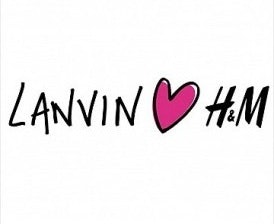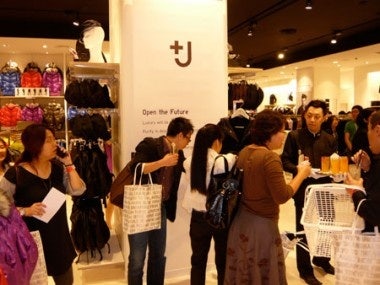Diffusion Lines As A Fashion Industry Trend#

While it’s long functioned as a successful fashion industry strategy, “masstige” has gained new currency as the buzzword of the moment, following the announcement of a capsule-collection collaboration between Lanvin designer Alber Elbaz and fast-fashion retailer H&M. Elbaz joins a long list of designers who have collaborated with mass-market retailers like Target, Gap, and H&M to create lower-priced lines. Additionally, high-end designers have been looking to create their own diffusion lines, to cash in on consumers’ thirst for affordable cachet. Fashion industry darling Olivier Theyskens designed a collection for Theory, and while not universally accessible, the collection was much more reasonably priced than his own line. This past week, Theyskens was named the new artistic director of Theory, putting that temporary project on a more permanent footing -- a significant indication that “masstige,” with its deft blend of accessible price points and prestige elements, has become more than a fad.
These projects have grabbed headlines, from Stella McCartney’s children’s line for Gap and Mulberry’s collection for Target to Matthew Williamson’s ambitions to launch his own diffusion line. But with the exception of large fashion retail collaborations with H&M or Uniqlo, one market that has seemingly been ignored is China.
The success of a luxury label in China has much to do with the connection between the brand and the status it confers. But Chinese consumers are becoming more educated and less status-obsessed. Though masstige lines provide less status, Chinese consumers are growing more appreciative of goods for their quality and style rather than the ability of their price tags to impress others. And while the media focus has been on the increased consumption of luxury goods, the vast majority of Chinese consumers cannot afford luxe designer prices, and will drive the demand for more accessible products. If masstige collections are offered supplemental to the luxury collections, there is little risk of impacting the luxury spending; instead, masstige opens up a new market segment of middle-class consumers.
China has become the most important market for the Ermenegildo Zegna Group. Half of the company’s single-brand stores opened in 2010 were in “Greater China,” and the largest of the four flagship stores to open in the last year is located in Shanghai. For the Zegna Group, China, including Taiwan, Macau and Hong Kong, produced growth of 29 percent in 2009. WWD recently highlighted Zegna’s look towards China, noting that luxury sportswear accounts for 50 percent of the business there. Part of the appeal is that “an owner of an enterprise wears what he wants,” said CEO Ermenegildo Zegna. But masstige or diffusion lines are not a significant element in the company’s current strategy. Like Theyskens’s designs for Theory, Zegna Group’s sportswear lines, Z Zegna and Zegna Sport, are a pricey cut above the true masstige market. Even so, and despite potential growth in its couture and made-to-measure suiting, its comparatively moderate-priced sportswear is the foundation of Zegna Group’s China sales.

Other companies have taken small steps in this direction as well. Vera Wang president Mario Grauso, for instance, has included Asia in a five-year expansion plan, noting the potential of their diffusion line to do very well there. But so far, few designers have looked at China to launch their diffusion lines. Lane Crawford has begun to offer UK labels Topshop and Topman, a reasonable-price retailer lauded for being fashion-forward with its designer collaborations.
Larger fast-fashion retailers are the ones to have taken the idea of high-fashion for the masses and carried it globally. Jil Sander’s +J capsule collection for Uniqlo, when released in Hong Kong, sold out quickly in 2009. H&M nearly doubled the number of stores they had in China in 2009, and with those stores, doubled their sales from the previous year, amounting to the second highest growth of any of their markets, following Japan. Lanvin’s H&M collaboration is set to be released in stores worldwide on November 23, and with buzz on various China fashion blogs, it should be a success there as elsewhere.
Torsten Stocker of Monitor Group, a global strategy consulting firm with offices in Shanghai, Beijing, and Hong Kong told Jing Daily that the next question would be if any Chinese designers or Chinese mass brands would pick up on this trend as H&M or Uniqlo has. While he “could imagine brands like Metersbonwe or Giordano getting behind this,” he added that whether these will be “Chinese designers remains to be seen.” As he explained it, a domestic designer would need to be nationally established at a high-end level before there would be the potential for a "masstige" collaboration.
Article by Felice Jiang